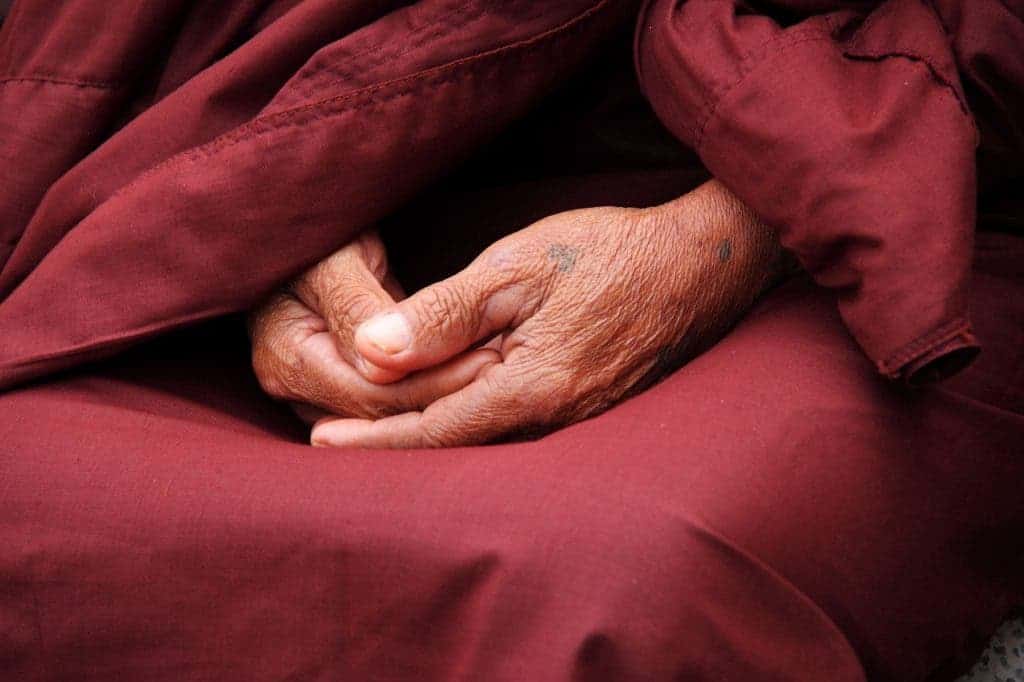Evidence suggests mindfulness meditation reduces both emotional and physical pain. Concerning the latter, we still don’t know the underlying mechanisms that cause meditation to have painkiller-like effects, but we’re getting there. We now know how it doesn’t work for instance after researchers found the effects of meditation do not involve opioids production in the body. This is good news for those with high tolerance for opioids, found both in illegal drugs like heroin but also in morphine, and just about any “serious” prescription painkiller.

Researchers at the Wake Forest Baptist Medical Center recruited 78 healthy and pain-free volunteers and divided them into four groups: meditation plus naloxone; non-meditation control plus naloxone; meditation plus saline placebo; or non-meditation control plus saline placebo. Naloxone is a substance that temporarily blocks the endogenous opioid system. Pain is good. It signals you to lay off a hot plate or stay away from pointy things. After the initial nudge, it’s this opioid system that floods the brain with opioids to shut down the pain.
Each day for four days, the volunteers went about their task (meditating or doing nothing) in 20-minute long sessions. At the end of the session, each participant was given a painful nudge using a thermal probe that heated a small area of the skin to 49 degrees Celsius. It’s painful enough for the body to start releasing opioids, the researchers said. To gauge pain, the volunteers used a sliding ruler to self-report it.
Those participants that meditated and were given the naloxone injection had a 24 percent reduction in pain from the baseline measurement. In the group that meditated, but were given a placebo injection, there was a 21 percent pain reduction. Those who didn’t meditate at all reported more pain regardless of whether they got the naloxone or placebo-saline injection.
“Our finding was surprising and could be important for the millions of chronic pain sufferers who are seeking a fast-acting, non-opiate-based therapy to alleviate their pain,” said Fadel Zeidan, Ph.D., assistant professor of neurobiology and anatomy at Wake Forest Baptist Medical Center.
“Our team has demonstrated across four separate studies that meditation, after a short training period, can reduce experimentally induced pain,” Zeidan said. “And now this study shows that meditation doesn’t work through the body’s opioid system.
“This study adds to the growing body of evidence that something unique is happening with how meditation reduces pain. These findings are especially significant to those who have built up a tolerance to opiate-based drugs and are looking for a non-addictive way to reduce their pain.”
Pain-killer addiction has reached endemic proportions in the United States. In 2012, enough painkillers were prescribed to keep every single citizen medicated around the clock for a month – or once every 12 days for an entire year. Tens of thousands die each year from overdosing on painkillers — a lot more than from heroin. Meditation could be used in conjunction with prescription drugs or alone, preferably if the pain isn’t deafening. Those who are addicted and have a high tolerance for painkillers might find meditation a godsend.
Meditation might not be able to help everyone, though. Which is why Zeidan and colleagues plan on studying next how mindfulness meditation can affect a spectrum of chronic pain conditions.
Findings appeared in the Journal of Neuroscience.


